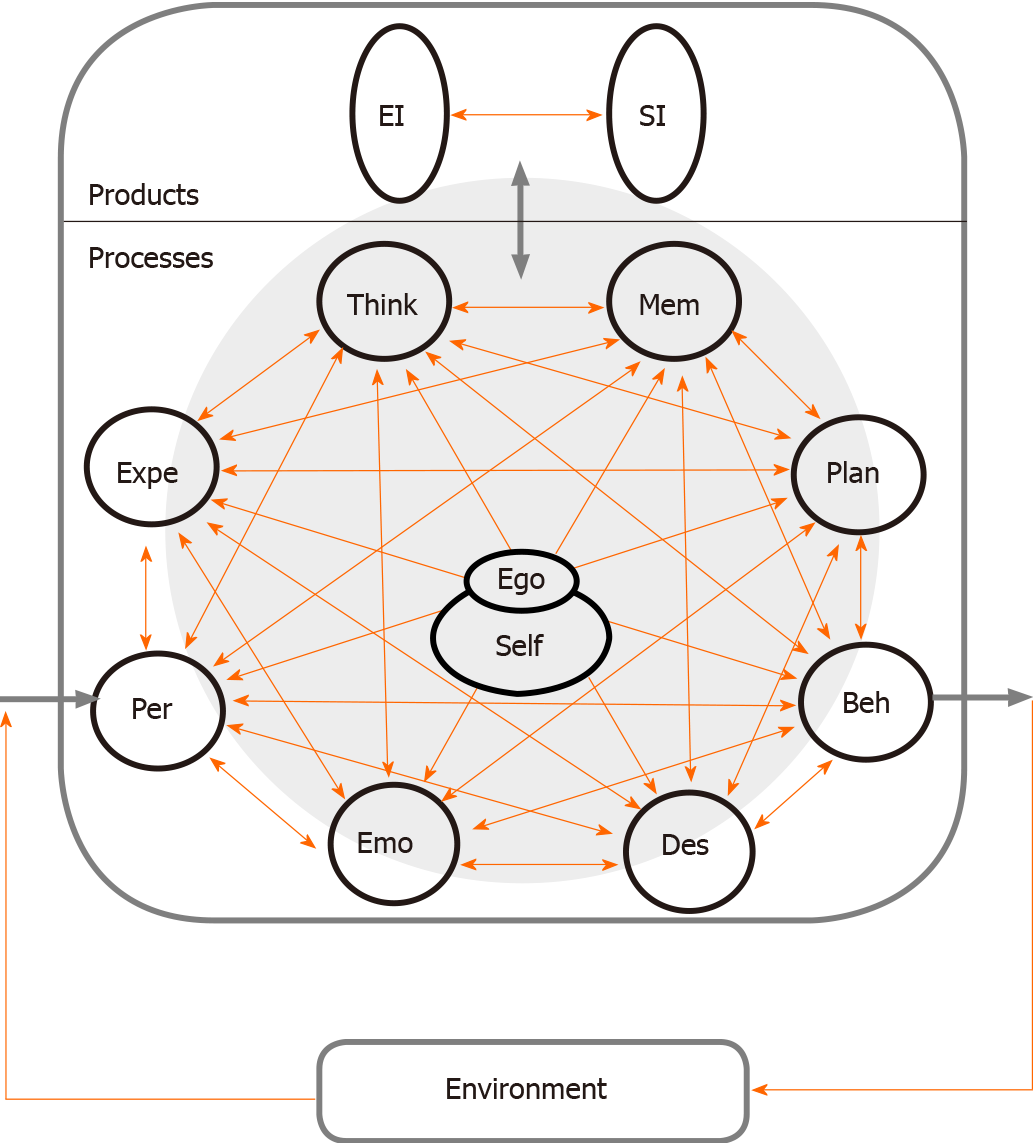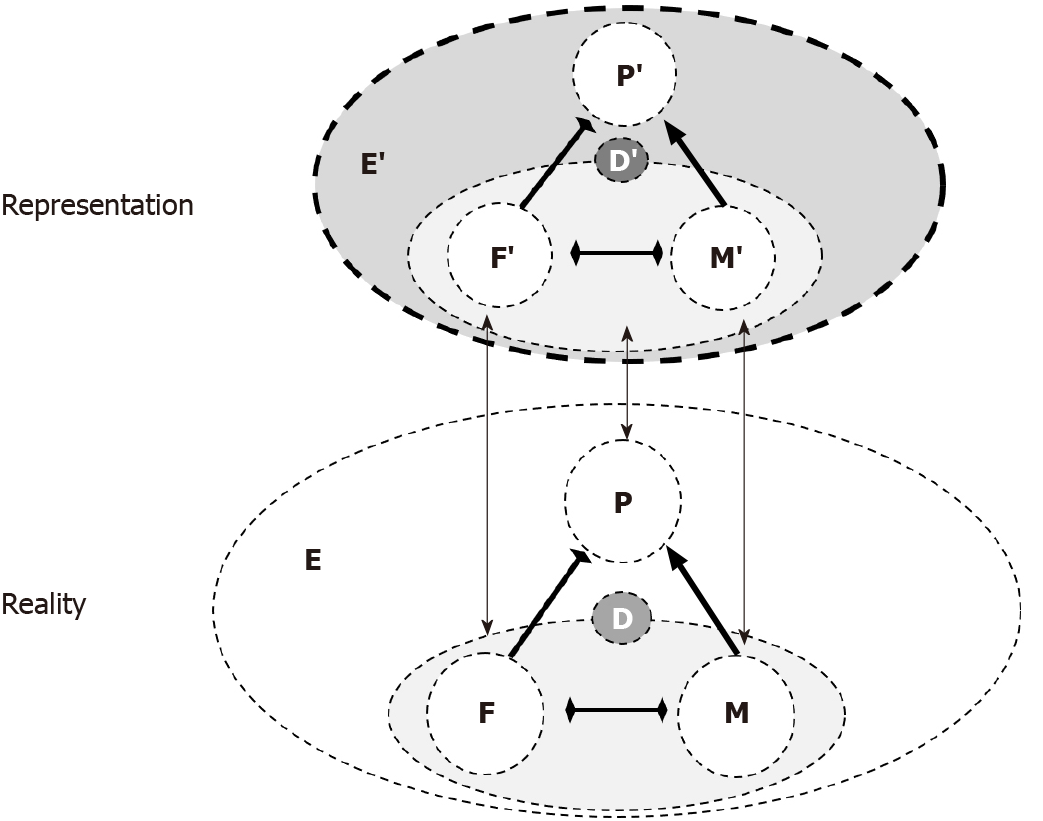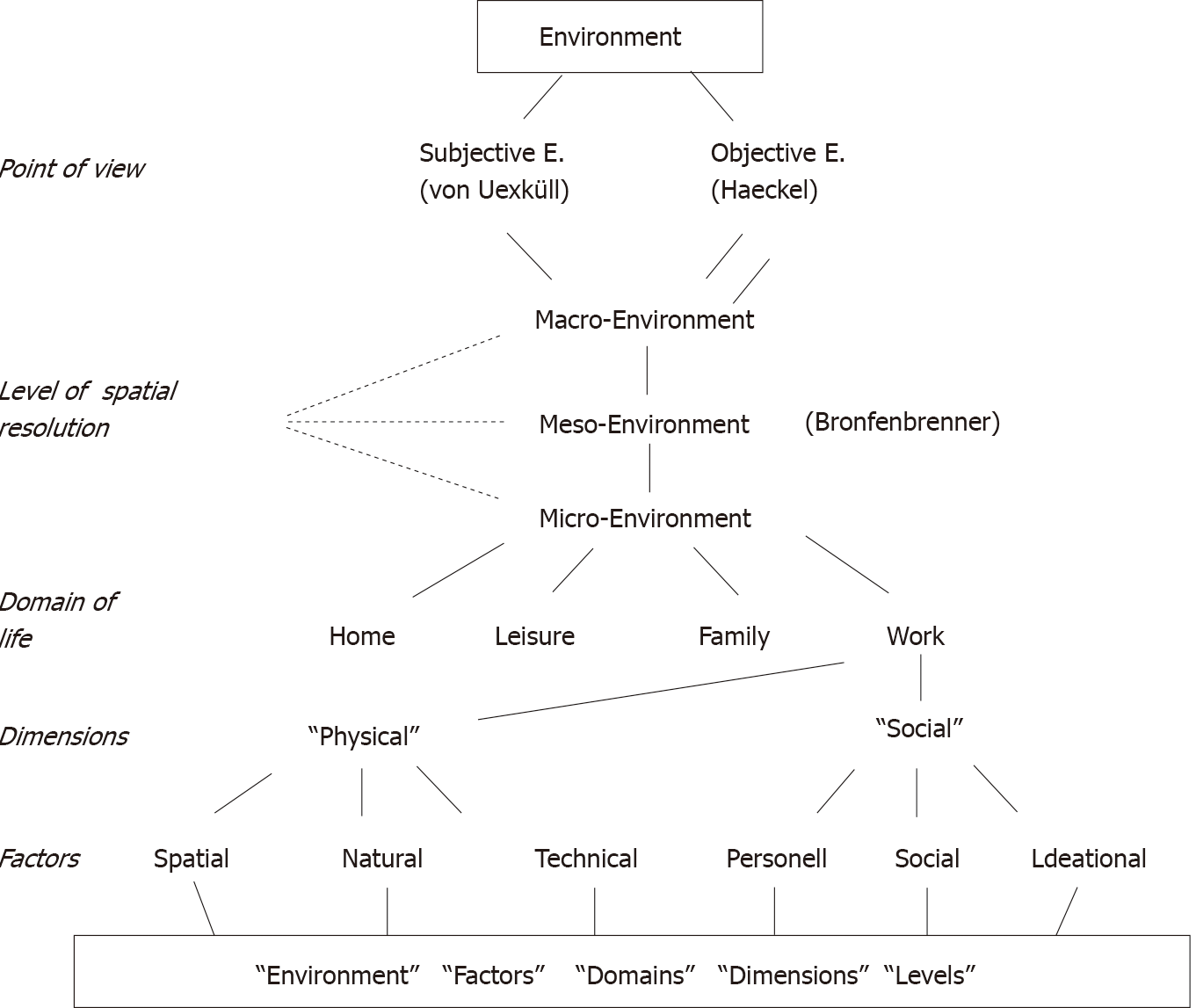Copyright
©The Author(s) 2021.
World J Psychiatr. Nov 19, 2021; 11(11): 915-936
Published online Nov 19, 2021. doi: 10.5498/wjp.v11.i11.915
Published online Nov 19, 2021. doi: 10.5498/wjp.v11.i11.915
Figure 1 Visualized systems model of the mind.
The list of subsystems being checked in psychiatric examination are represented here as interconnected mental operators (subsystems) within an operationally closed network. Consciousness is represented here as a shaded circle, regarding the metaphor of light and dark. Not all relations, especially of the ego/self, are depicted here in detail[88]. Perc: Perception; Expe: Expectation; Thin: Thinking; Mem: Memory; Plan: Plans of behavior; Beh: Behavior; Des: Desires; Emo: Emotions; EI: Environmental image; SI: Self-image as affective-cognitive schemas.
Figure 2 Model of reality and affective-cognitive representation of the adolescent drug using person (P; D, drug) and his or her family as the environment (E): The demanding father (F, with line with transom) and the supporting mother (M, with arrow) induce tension for the child that results in drug consumption for sedation and/or escape.
In addition, the parents oppose each other (line with two transoms). The model depicts the reality (E, P, F, M, D) and the mental representation by the patient (E’, P’, F’, M’, D’).
Figure 3
Conceptual taxonomy of environment-related and partially interchangeable terms (details see text).
- Citation: Tretter F, Loeffler-Stastka H. How does the ‘environment’ come to the person? The ‘ecology of the person’ and addiction . World J Psychiatr 2021; 11(11): 915-936
- URL: https://www.wjgnet.com/2220-3206/full/v11/i11/915.htm
- DOI: https://dx.doi.org/10.5498/wjp.v11.i11.915











